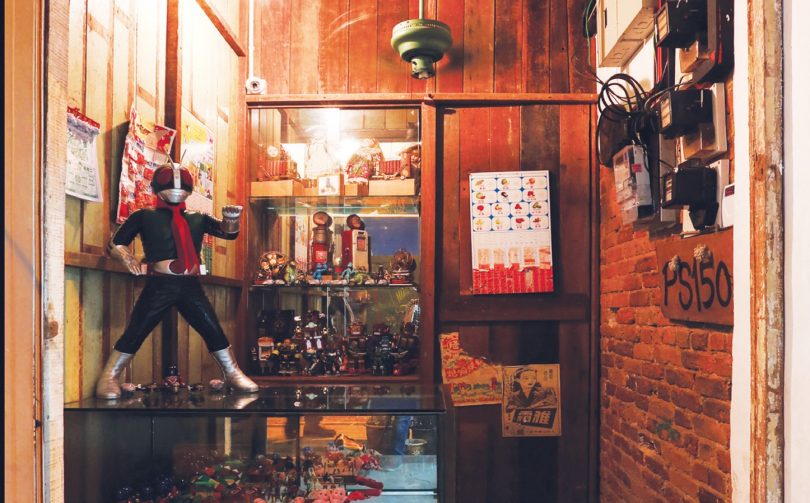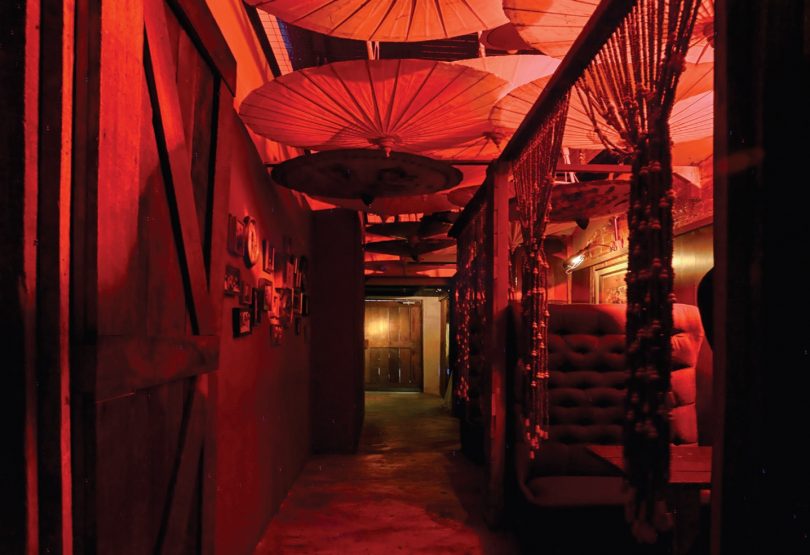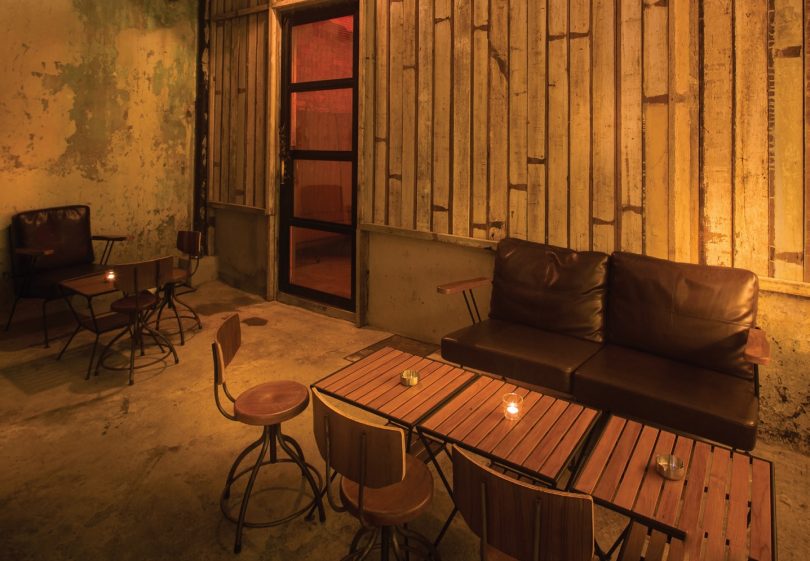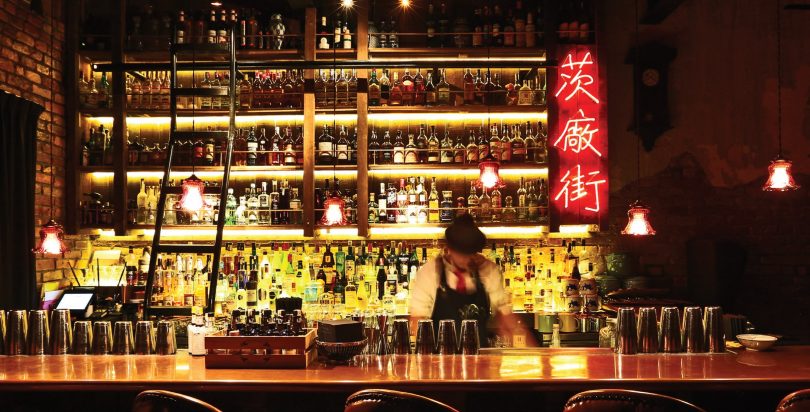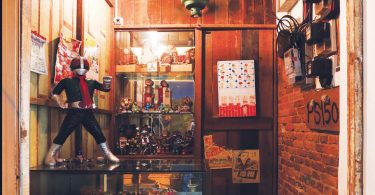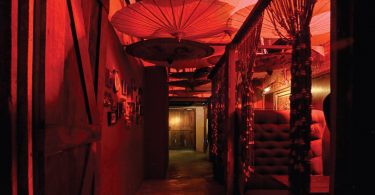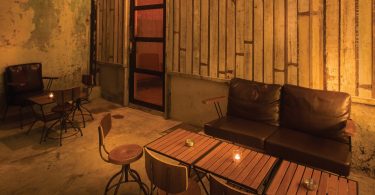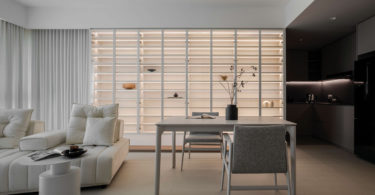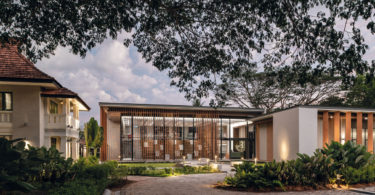Designing a bar is not unlike creating a cult culture in itself. There are numerous speakeasy-inspired bars sprouting up in Kuala Lumpur, many of which are trendy European or English type gentlemen bars. The PS150 owners wanted a bar with a more local flavour. And what better location than an old shophouse in what was once a thriving brothel district in the city.
The point of entry for the cocktail bar posed the greatest hurdle as the frontage was an unexciting provision shop, constraining the visual presence of what was intended to be a hip space. The solution was to create a hidden entrance, disguised as a traditional toy shop, making the first point of interaction with guests a memorable one.
The antique toy counter at the entrance evokes long-lost childhood memories, belying the more adult fun that lies inside. This yearning for a more golden age is echoed throughout the establishment.
COCKTAIL MILESTONES
The bar is laid out in three different stages—its seating zones marking three distinct eras—with much of the original pre-war building condition preserved, enhanced and reinterpreted.
As guests go through the stages, the spaces and textures start to unfold. The first stage is a vintage-looking space that harkens to the pre-Prohibition era. Visitors are met with wide charcoal wing-backed chairs, set behind beaded curtains. Light filters through oriental parasols festooned from the ceiling, bathing the historical photographic portraits adorning the hall in a soft red glow. The room has a sensual feel, harking back to the building’s former life as a brothel.
Moving into the open-air smoker’s courtyard, one is transported to the Tiki or post-war era. Deep rich leather chairs seductively beckon, while drink ledges set into the exposed brick wall invite visitors to partake in the somewhat lost art of conversation with strangers. The roots of an aged fig tree creep down the wall, lending an ethereal air of spirituality.
Pushing through, the Revival-era main bar area is revealed behind the doors. Backlit in warm tones, rows of exotic and hard-to-find alcohol bottles reach all the way to the ceiling as a striking backdrop. Dark wood, soft leather and a copper bar are softly lit by more red lanterns and a red neon sign reading chee cheong kai in Chinese—the traditional name for Petaling Street.
A heavy metal door at the rear of the bar serves as a secondary entrance for guests who want a dark street entrance adventure.
OLD CHARM
The designers focused on ensuring the old 1960s charms, from the days of the Straits Chinese merchants, are preserved authentically, down to the traditional construction methodologies used.
Recycled timber was used for the carpentry, and some of the fitments were done without nails. The original pre-war bricks were exposed, and its plaster stripped away, revealing the textures of a building that was once lost in time. Natural cement was used to mimic the old style of these Straits Chinese shophouses.
Whimsical sprayed-on patterns on the floor mimic the traditional Indian henna tattoo, one of the subtle details that help enhance the richness of the experience with an ‘indie’ feel.
PROJECT DATA
Project Name: PS150 Bar
Location: Petaling Street, Kuala Lumpur
Completion Date: December 2015
Site Area: 100 square metres
Gross Floor Area: 100 square metres
Building Height: 1 storey
Client/Owner: Bay Baristas
Interior Design Firm: Genius Loci Pte Ltd
Principal Designer: Benjamin Joseph Kim
Mechanical & Electrical Engineer: MESET Engineering & Associates Sdn Bhd
Interior Fit-Out Contractor: Vanquish Constructions Sdn Bhd
Images: Genius Loci Pte Ltd

 Hong Kong
Hong Kong Singapore
Singapore Indonesia
Indonesia Tiếng Việt
Tiếng Việt ประเทศไทย
ประเทศไทย

